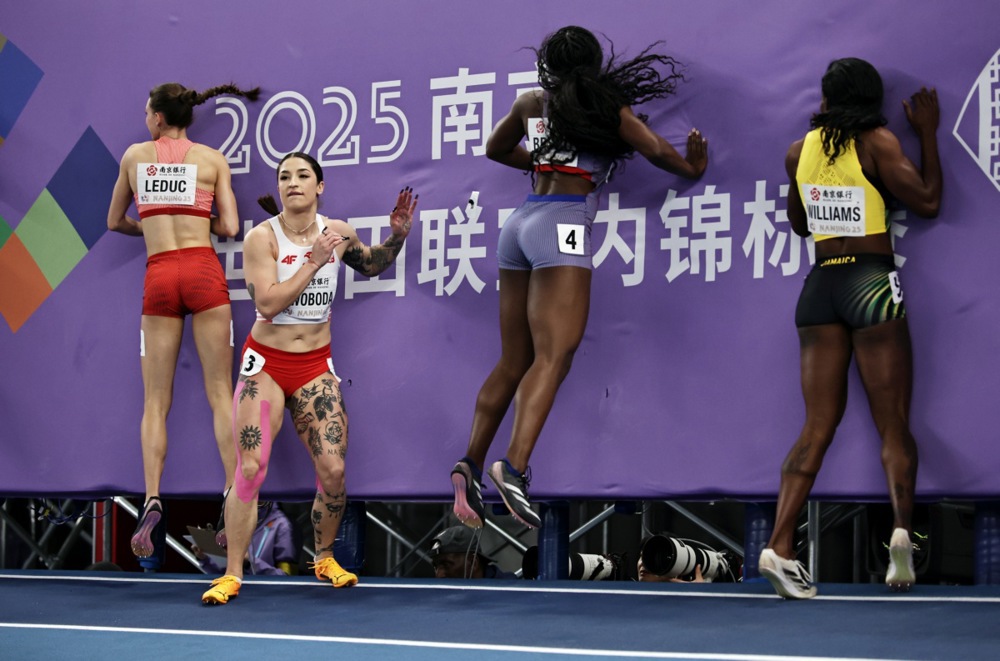World Athletics, the body that governs track and field as well as road-running events, will demand DNA tests for athletes competing in the female category in elite events.
World Athletics president Lord Sebastian Coe, who last week lost out to Zimbabwe’s Kirsty Coventry for the presidency of the International Olympic Committee (IOC), made the announcement on Tuesday.
Guaranteeing the rights of female athletes and protecting the female category was one of the pillars on which Coe ran his IOC presidential campaign.
Despite missing out on the top job, Coe is following through on his commitment as head of World Athletics.
The new policy will involve a one‑time cheek swab or dry blood test that is noninvasive. The policy is necessary to protect fairness in the female category, according to Coe and World Athletics.
The organisation has not set a timeline for the roll-out of testing but hopes to have it in place in time for the 2025 outdoor world championships in Tokyo, Japan, in September.
“We’re not just talking about the integrity of female women’s sport, but actually guaranteeing it,” said Coe. “And this, we feel, is a really important way of providing confidence and maintaining that absolute focus on the integrity of competition.
“We will doggedly protect the female category, and we’ll do whatever is necessary to do it. Overwhelmingly, the view has come back that this is absolutely the way to go, within the caveats raised [regarding the invasiveness of the testing].”
Scrutiny
The policy is likely to be legally challenged in the coming months, but Coe believes it can survive rigorous legal scrutiny.
“Yes, I am [confident of the policy passing a legal appeal], but you accept the fact that that is the world we live in,” said Coe.
“I would never have set off down this path to protect the female category in sport if I’d been anything other than prepared to take the challenge head-on.”
This will have a direct effect on transgender women and DSD (differences of sex development) athletes, such as South Africa’s Caster Semenya, competing in the female category.
Transgender women are biologically assigned male at birth, while DSD is a congenital condition in which people have atypical sex chromosomes.
Humans born without DSD have two X chromosomes as females and XY chromosomes as males.
World Athletics confirmed the cheek swabbing tests will be for the SRY gene, which is found on the Y chromosome and is a key determinant of male-typical sex development.
Athletes would have to take the test just once in their careers to show that they do not have the SRY gene.
Initially, World Athletics opted to try to impose a lowering of testosterone levels for transgender women and DSD athletes.
But it later took a firmer stance to ringfence the female category.
World Athletics now bans transgender women who have gone through male puberty from competing in women’s events and requires female DSD athletes whose bodies produce high testosterone levels to lower them to be eligible.
Benefits of male puberty
World Athletics has reached this point after years of deliberation. Experts argue that lowering testosterone levels is not enough to offset the physical benefits accrued by going through male puberty.
It’s a biological fact that males are, on average, taller, faster and physically stronger than females. They have larger muscles of more density, wider shoulders, narrower pelvises and larger hearts and lungs. They possess more fast-twitch muscle fibre and longer limbs, which are all a result of going through male puberty.
Elite female athletes will outperform most men, but when placing elite females against elite males, the picture is vastly different.
In 2022 alone, 1,972 men ran the 100m faster than the fastest woman, according to World Athletics’ statistics.
As events move away from power to endurance, the numbers drop off slightly, but even in the marathon, 617 men ran faster than the fastest female in 2022.
Jamaica’s Shelly-Ann Fraser-Pryce was the fastest woman on Earth that year with a time of 10.62 seconds over 100m, while the US’s Fred Kerley was the fastest man with a time of 9.76 seconds.
They would be separated by almost 9m on the track, or about 10% in terms of performance if they raced together and posted those times.
Between Fraser-Pryce and Kerley, there were 7,641 instances of faster men’s times than that of the leading woman.
This is just one example of why categories are essential.
Athletics, at least at the elite level, has not had any cases of transgender women competing. However, there have been cases of DSD athletes, with Semenya the most high-profile.
The issue permeates down to amateur and school sports, where blurring the lines between male and female categories has the potential to be more problematic.
Sports such as swimming, rugby union and rugby league have already banned transgender women who have gone through male puberty from competing in female categories, using the issue of fairness as a benchmark.
Transgender advocates argue that transgender women do not identify as male and therefore should compete as females (as those are the only two categories that currently exist).
In a sporting context, gender identity and physiology are not aligned.
It’s a highly emotive subject because a person’s right to self-identify their gender is acceptable in the normal course of life.
However, in elite sports, where categories exist for clear biological reasons, gender identification does not make it fair from a physiological standpoint. DM





